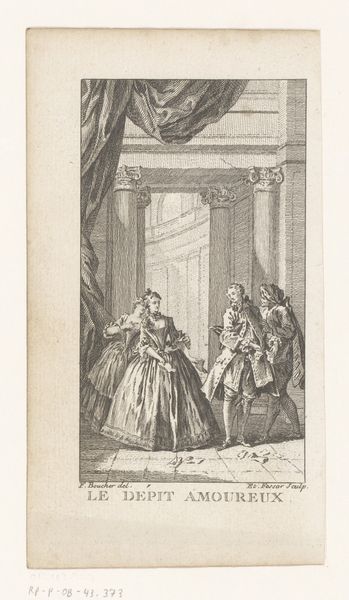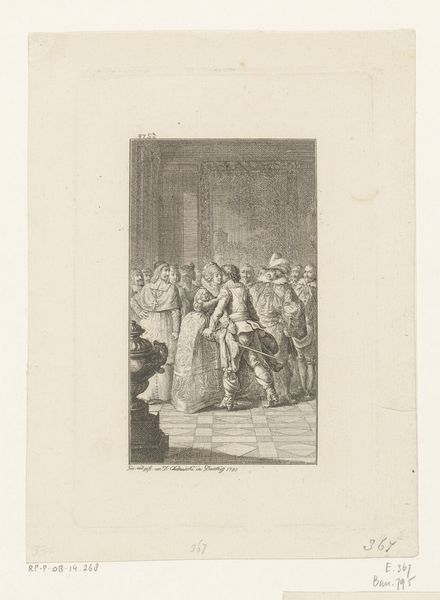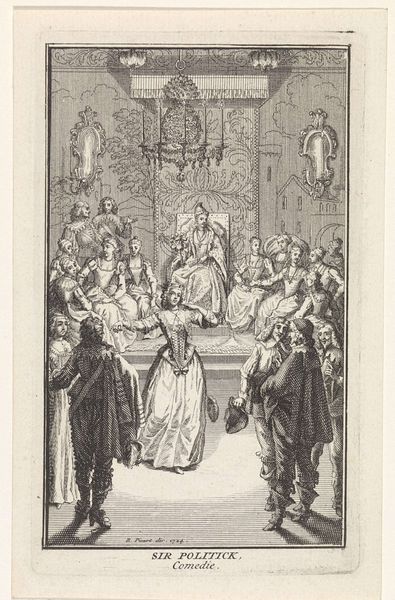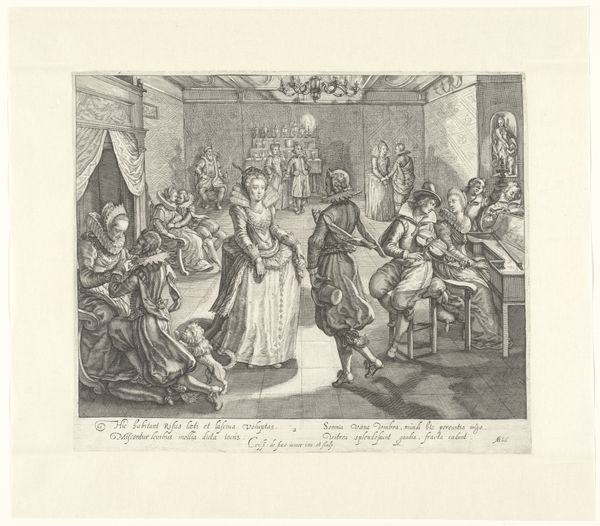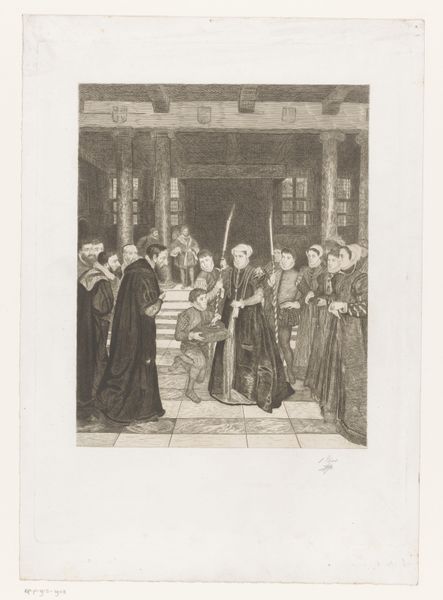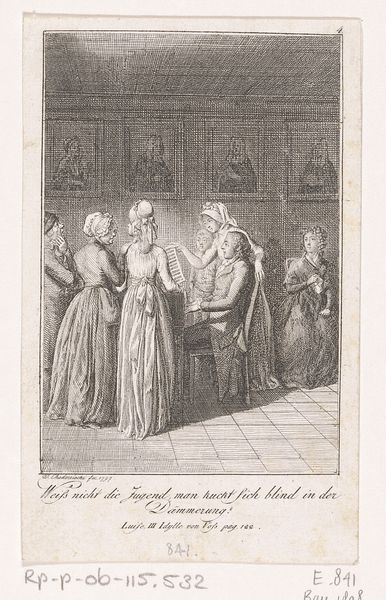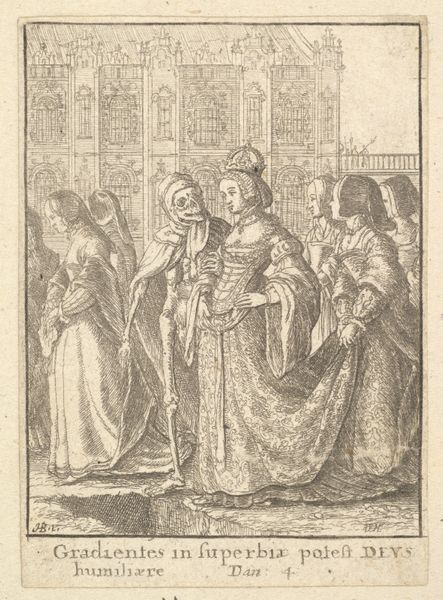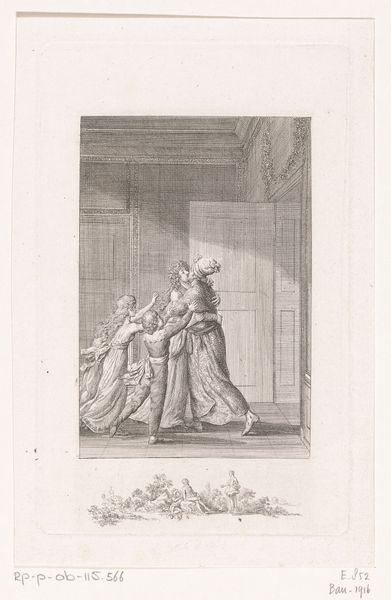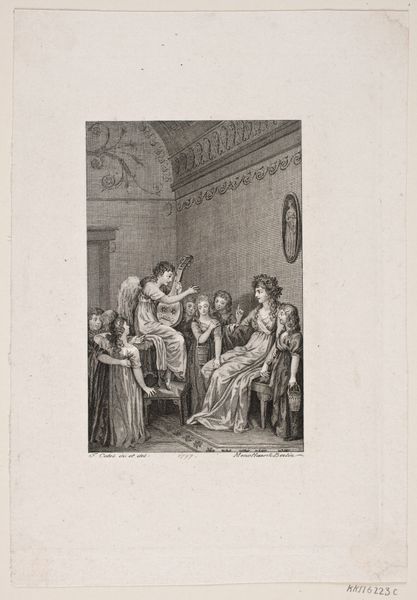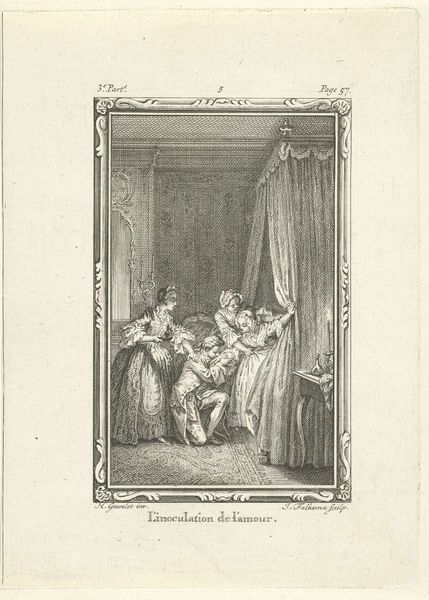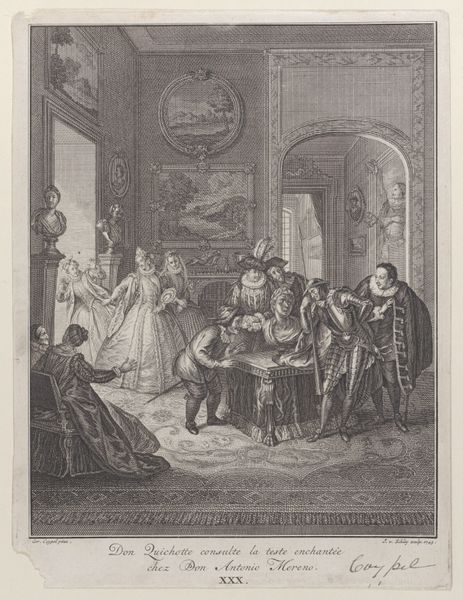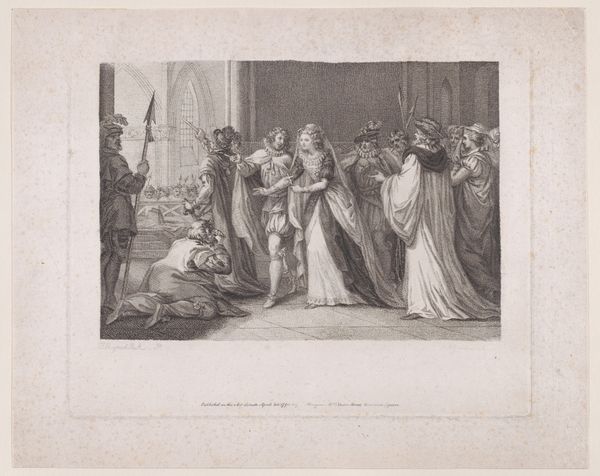
drawing, paper, engraving
#
drawing
#
aged paper
#
light pencil work
#
baroque
#
parchment
#
pencil sketch
#
old engraving style
#
sketch book
#
paper
#
personal sketchbook
#
old-timey
#
pen-ink sketch
#
sketchbook drawing
#
genre-painting
#
engraving
Dimensions: height 143 mm, width 77 mm
Copyright: Rijks Museum: Open Domain
Curator: This etching by Etienne Fessard, after François Boucher, titled “Twee koppels in een salon," or "Two Couples in a Salon," dates back to 1749. What are your initial thoughts? Editor: My immediate impression is the density of labor implied. Look at the textures! The swirling fabrics of the women’s gowns, the precisely etched lines creating depth in the architecture. This isn’t just a drawing; it's a record of skill, and by extension, work. Curator: Absolutely. The scene itself offers a glimpse into the social performance of the time. We see two couples in what appears to be a drawing room, their postures and interactions suggesting a staged social interaction. How might this reflect the era's social mores? Editor: I think it reflects how consumerism shaped identity. The clothing becomes a clear marker. Were those garments manufactured locally? Were they traded over vast distances? Who was exploited in the material production? It asks us to examine the intersection of consumption, labor, and social display. Curator: Considering this was made during the Baroque period, you can also appreciate how imagery became entangled in the rise of the public sphere. Images such as this, circulated as prints, fostered discussions, establishing a framework for observing and understanding societal roles and class dynamics. Editor: And did it reinforce them? These prints were, in effect, advertisements for social aspiration and a certain standard of beauty and wealth. Think of the systems of patronage and influence in artistic production at the time—it all speaks to this complex web of labor and the socio-political order. Curator: I agree. This piece reveals to us a narrative woven into the fibres of its time. It’s a visual archive that holds details about how the ruling class aimed to shape a growing collective narrative around itself. Editor: For me, this piece is also an index. It offers insight into what material practices, exploited or celebrated, can tell us about culture, labor, and power structures that remain at play even today.
Comments
No comments
Be the first to comment and join the conversation on the ultimate creative platform.
